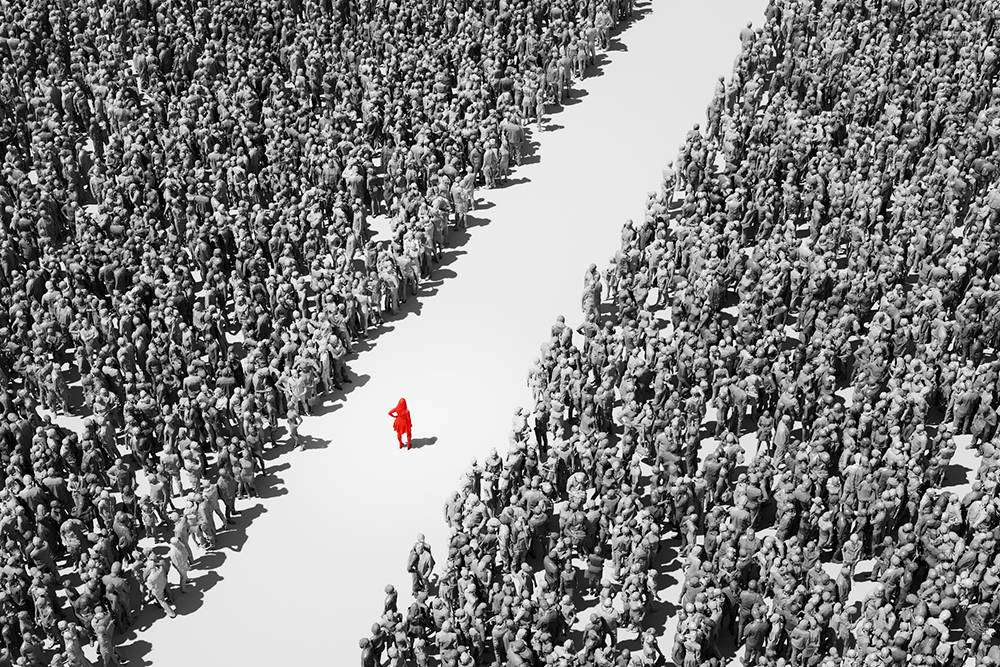To travel by train through America’s rustbelt is to witness the real reason for Trump’s tariff revolution. Miles upon miles of derelict factories and decaying industrial architecture stand as monuments to trade policies which have gutted America’s manufacturing heartland and undermined the families – and the towns – which depended on it. In electing the Trump-Vance ticket last year American voters have called time on decades of elite indifference to industrial production and the liberal trade policies which have accompanied it.
It turns out that the transitory profit secured by executives who out-sourced thousands of US industrial jobs to cheaper jurisdictions is no compensation for the loss of your industrial base. Trade deficits have not only caused social breakdown, they have gradually beggared the wider American economy. A strong creditor nation has been turned into the world’s biggest debtor. Trump and Vance grasp this – and they are right to try to correct it.
Free trade advocates have dominated the academic, economic and political landscape for decades and so at first sight Trump’s protectionism might seems wildly heterodox. However, trade protectionism is legitimate, necessary and can be effective. I’ll explain why.
First, while international trade undoubtedly boosts total production and global welfare it’s a mistake to advocate total free trade at all times and in all places. Economic history shows that at certain times forms of industrial protectionism can benefit a nation. After all, the United States developed its manufacturing behind a tariff wall and prospered as a result. Virtually all states practice forms of protectionism from time to time for very good reason. Politically, this is nothing new. It was the position of my favourite Edwardian Tory, F. E. Smith, who argued in 1909:
It is a waste of time to consider where we stand as between free trade and protection. We are offered no such choice. We must choose between protection and one-sided free imports. Confronted with such alternatives, if this indeed be the choice, I am a protectionist.
Secondly, Trump is facing the fact that the United States has a massive trade problem which is making American citizens poorer and strategically weakening the country. The US runs colossal trade deficits year after year. In 2024 it was $1.2 trillion. Some economic liberals think it doesn’t matter. This is completely wrong. Americans – like any other nation – can pay for imports in three ways: by exporting things, by selling assets, or by issuing debt. Running a huge trade deficit means selling assets and raising debt. This isn’t a theory – it’s just mathematics. Debt-fuelled consumption is not prosperity. It’s the reverse, a form of instant gratification.
Third, Trump and his team are correct in understanding that the US trade gap cannot be narrowed by continuing the trade and industrial policies which caused it. An urgent policy switch is required as it becomes evident that continued indifference of the American ruling class to what is made where and by whom will lead to further beggary. This is partly because of an apparent paradox: cheap goods are more costly than you might think. If a local economy based on production is replaced with one based on debt a whole series of wider problems emerge. The factories close, the drug dealers move in and the industrial wage – once the foundation of the family – is destroyed. And as the benefits bill ramps up, the state must borrow money to mop up the blood. Yes, Americans have cheap imported goods at Walmart, but if a town loses its industry there are fewer consumers and more debtors in the end.
The current system of international trade has created huge economic imbalances which need correcting
Trump and Vance are also correct in noticing that production and trade is not all about price. Sometimes national security must come first. China now outstrips US industrial production in virtually every category – automotive, maritime, consumer technology and in heavy engineering. Ultimately, the continued military supremacy of the United States is put at risk if its industrial capacity continues to be allowed to degrade. The security of the United States and all of its allies is at stake.
Finally, it is significant that Trump’s tariff policy came with the fulsome praise of the United Auto Workers union. Its president, Shawn Fain, described them as the end of a 30-year-plus ‘free trade’ disaster which has ‘devastated the working class’. Fain also produced a long list of underutilised auto plants throughout the United States – in Michigan, Kentucky, Ohio, Kansas and Tennessee – which would take up the slack and substitute imports with American production. Given time, and the right trade policies, he’s probably right.
The current system of international trade has created huge economic imbalances which need correcting. Trump recognises this. His ‘Liberation Day’ policies will not only change the world, they will change they way we see the world. They will give national states greater freedom to re-industrialise, to protect strategically important sectors and to make some of their own social and economic bargains. For the first time in 40 years, trade protectionism is now a legitimate political choice. That’s a good thing.








Comments